How Did the Aluminum Get Its Stripes? Babette Holland’s Spun Metal Lamps
If, as chance should have it, you were tasked with naming a relevant antecedent for the very contemporary form of spun metal in architecture and design, which name would you evoke? From among the great panoply of artists in centrifugal aluminum, I’d go with one Russel Wright, the “Modfather,” of spun aluminum, and the most overt influence for the wondrously wrought metalwork lamps of Babette Holland.
Nina Lamp. Designed by Tony Brown and Babette Holland. Manufactured by Babette Holland.
The Scintillating Stripes of Babette Holland’s Aluminum Lamps
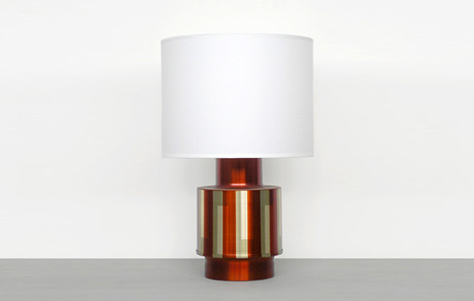
The joke above is, of course, that there’s virtually no other to have that degree of influence for what is essentially an arcane art. And Babette Holland discloses as much: “Our shapes are quite complex and can only be made by hand, one piece at a time, by master spinners. Every piece is made using multiple chucks and spinning is done in many stages.”
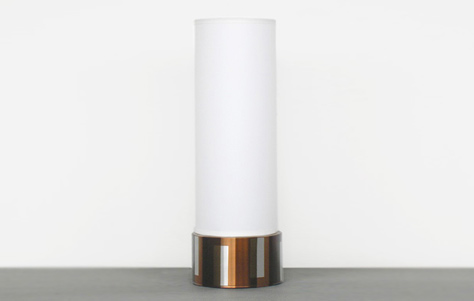
The above gives just a sampling of what kind of involvement and innovation goes into creating, say, the lovely Pillar Striped Lamp, a 100-watt model with a 5.5” base, 21” high stem, and 10” x 12” shade in pebble silk. Or the equally enchanting Michelle, whose compact structure (6” base with a 13” x 10” white linen shade) shows off its “Shadow Stripe” finish with the all the aplomb of a circus ring master.
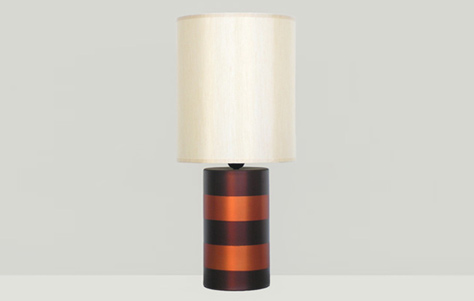
Babette Holland offers other striped styles besides. There’s Chuck, with a horizontal banding of charcoal and rust stripes or your choice of “copper tones” or “festival” overlaid bars of browns, silvers, rusts, and reds. Then there’s la piece de resistance: the curvaceous, organic, slightly psychedelic and definitely hypnotic Nina, featuring “Hazy Stripes” and a bottle-neck style stem that eases ever so gracefully into a 13” x 10” white linen shade.
About the Manufacturer: Babette Holland readily acknowledges that “If there’s a more difficult way to manufacture, we just haven’t found it yet.” That’s because the Brooklyn-based company’s medium of choice is spun aluminum: “The motion of spinning metal resembles a slow, rocking dance, which could be quite sexy if grease wasn’t flying into your hair.” Once done polishing the rough product (and shampooing, one imagines) the company performs a meticulous coloring and finishing process—“solid colors, patterns, fades, bursts, horizons, burnouts or whatever finish technique is called for… a process that requires many stages, applications, and a very discerning eye.” The end result is retro and contemporary at once—a beautiful collection of iridescent, enchanting metal lamps in a wide range of colors and styles.


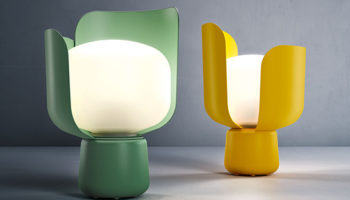
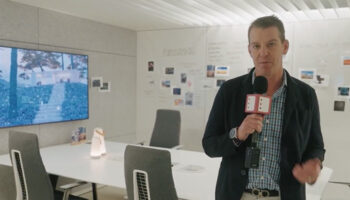
Leave a Reply